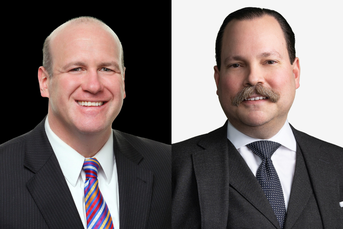As the room fills to capacity on April 6 with celebratory lawmakers and advocates awaiting the Labor Department’s final fiduciary rule, the champion of the measure, Phyllis Borzi, stands quietly at the back.
But minutes before the agency unveils its controversial regulation raising investment advice standards for retirement accounts, the scene surrounding the assistant Labor secretary turns into a kind of receiving line at a wedding reception. Ms. Borzi cannot stay inconspicuous among the people who know her central role in reaching this pinnacle hour.
“Enjoy the moment, Phyllis,” says one well-wisher at the Center for American Progress in Washington that day.
Phyllis Borzi: the tortoise speaks
Ms. Borzi says nothing. Instead, she smiles behind her thick, round eyeglasses, and leans in for hug.
Weeks later, 69-year-old Ms. Borzi choked up when recounting her team’s efforts to reach that day — which unfolded over a long, slow and often arduous six-year journey. As the main architect of the so-called DOL fiduciary rule, which requires financial advisers to 401(k) and individual retirement accounts to act in their clients’ best interests, she is credited with pushing through a nearly unprecedented wall of opposition. That opposition came from such powerful industry groups as the Securities Industry and Financial Markets Association, the U.S. Chamber of Commerce and the Financial Services Institute.
But she never backed down.
“My grandmother used to call me ‘the tortoise,’” Ms. Borzi said. “I was very tenacious. I was very patient. I was very deliberative.”
Others might describe her as calculating. That’s because the story of the rule’s journey from a proposal that was almost universally detested to a rule change that proponents are quick to hail as a necessary safeguard to all retirees, has been meticulously woven into a narrative designed to temper opposition.
“
The DOL and the White House used their detailed knowledge of the proposed rule to create a narrative before it was even released,” said David Bellaire, executive vice president of the Financial Services Institute. “They did the same with the final rule, creating a narrative that it is vastly improved before anyone had a chance to thoroughly analyze it.”
“My grandmother used to call me ‘the tortoise’. I was very tenacious.”
–Phyllis Borzi, assistant secretary of Labor, Employee Benefits Security Administration
Standing at the center of that narrative is a woman with a hard-shell concept of right and wrong and who was beat back by those who didn’t see the black-and-white nature of her ideal. After patching up the battle scars from an early defeat, she regrouped with a powerful duo and conceded to the reality of gray, in one last drive to change the financial advice business forever.
Ms. Borzi, a former high school English teacher who stands about five feet tall, is hardly an imposing figure. In fact, she looks more like a favorite grandmother than the tough nut who has sometimes rubbed opponents the wrong way.
In a room full of brokers in 2014, Ms. Borzi didn’t pull any punches about her take on their business practices. She told them that if their profits depended on conflicted advice, they’d better change the model. The audience seethed.
The same unvarnished approach came through in one-on-one meetings with industry representatives, some of whom said she held so tight to her convictions that conversations were often at loggerheads from the get go.
The tortoise was largely immovable.
Often, though, these qualities are the very ones that help a person endure the darkest days. One day that stood in stark contrast to the April 6 celebration was the post-mortem held in Ms. Borzi’s office on Oct. 26, 2011, a few weeks after the original proposal was withdrawn.
That measure, introduced the previous year, had been met with a hail of criticism from the financial services industry. It was not only ripped by Wall Street but also generated doubts among investor advocates as to whether it could work.
“They weren’t aware of the extent of the regulation going on the securities side,” said Felicia Smith, vice president of the Financial Services Roundtable, about the DOL’s knowledge in general. “We were never given a consistent answer on what problem they were trying to solve.”
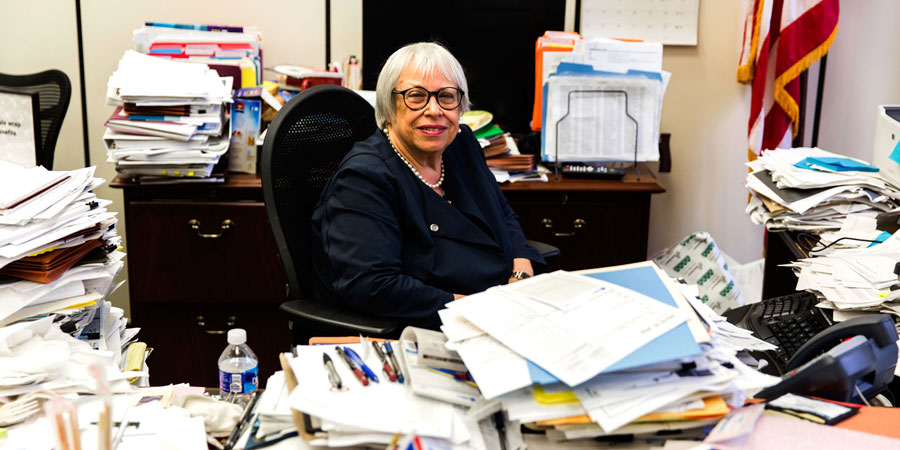 Phyllis Borzi in her office in Washington.
Phyllis Borzi in her office in Washington.
Though Ms. Borzi pulled back the proposal, she had no intentions of quitting. Instead, she would fix problems critics highlighted and try again, as she made clear to the visitors in her office in the fall of 2011.
“I would characterize her body language as leaning forward and saying, ‘This is an important fight to win. This is an important injustice to rectify,’” said Scott Puritz, managing director of Rebalance IRA and one of the 2011 meeting attendees. “’We’re going to up our game. We’re going to come back.’ It was like a great football-coach speech.”
Ms. Borzi, who has headed the Employee Benefits Security Administration since the beginning of the Obama administration, was even willing to stake her livelihood on the regulation.
“In that meeting, she said, ‘What are they going to do? Fire me?’” Mr. Puritz said.
Her lengthy congressional experience as a legislative aide on the House Subcommittee on Labor-Management Relations, where Ms. Borzi developed her tortoise-like style of “raging incrementalism,” gave her an idea of how big a challenge it would be to achieve a final rule.
(More: Coverage of the DOL rule from every angle)
“I knew from my days on Capitol Hill how ferocious the financial services industry is in opposing something,” Ms. Borzi said. “This will sound too Pollyannaish, but I’ll say it anyway: It was just the right thing to do. People were being harmed.”
Her father once told her, based on advice from his commanding officer in World War II, that a person has to “choose the hill you’re going to die on.”
Ms. Borzi selected the fiduciary hill based on insights from DOL career staffers who almost unanimously put investment advice to retirement plans at the top of their fix lists, Ms. Borzi said, because they had seen many small businesses and their employees suffer due to poor guidance from the plans’ financial advisers.
“It just didn’t seem fair,” she said. “I can’t say enough about my career people.”
But Ms. Borzi and her staff couldn’t get the rule over the finish line alone.
Thomas Perez
the
‘good’ cop

The biggest difference between 2011 and 2016 — and the decisive factor in making the rule a reality — was winning the strong, public support of President Barack Obama.
Although Ms. Borzi knew Mr. Obama from her deep involvement with the health care reform law, the person who was instrumental in bringing him on board was Labor Secretary Thomas Perez, who was confirmed by the Senate in the summer of 2013.
Mr. Perez quickly became the “good” cop — the one who listened — to Ms. Borzi’s “bad” cop. He promised lawmakers he would talk to all stakeholders about the DOL fiduciary proposal and decide how to proceed. But, no mistaking it, he embraced the rule and gave it the political momentum Ms. Borzi, the policy wonk, couldn’t.
“It didn’t succeed until they wrapped the politics around it,” said Brian Graff, chief executive of the American Retirement Association. “The whole thing wouldn’t have gotten started unless Phyllis initiated it. [But] she didn’t have the political firepower to get the ball down the field. That’s where Perez came in.”
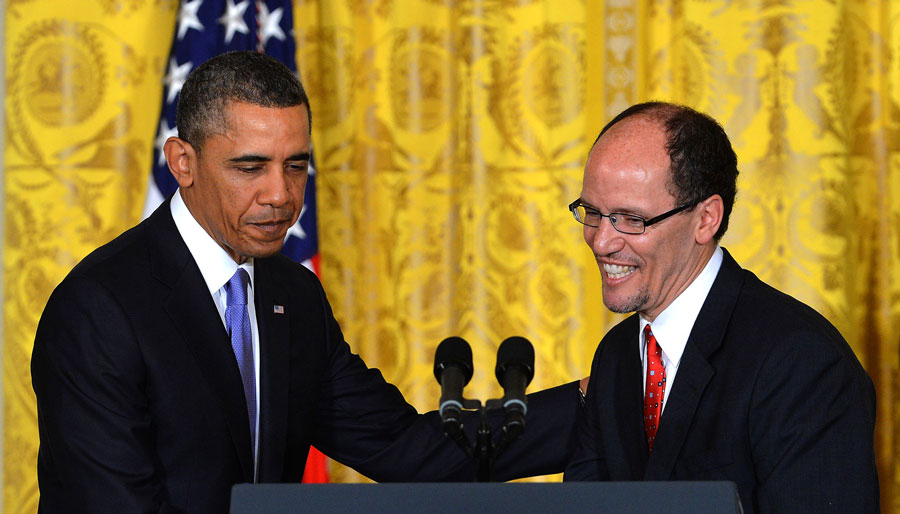 President Barack Obama nominates Thomas Perez as Labor secretary in 2013.
President Barack Obama nominates Thomas Perez as Labor secretary in 2013.
Mr. Perez and Ms. Borzi make a good team, according to Dallas Salisbury, president emeritus and resident fellow at the Employee Benefits Research Institute. Both regulators have spent their careers working on issues that center on an individual’s rights and protections: Ms. Borzi on workplace benefits and Mr. Perez, as an assistant U.S. attorney general for civil rights, on mortgage lending.
“You’re talking about a labor secretary and an assistant labor secretary who are two peas in a pod,” Mr. Salisbury said.
Their coupling was augmented by deputy assistant secretary Judy Mares, a former director of benefits at big corporations, and deputy assistant secretary Tim Hauser, who deftly conducted four days of hearings on the rule last August.
The DOL team achieved a breakthrough in investment advice oversight with their fiduciary rule — which had stymied regulators for decades.
HISTORY
THE
HARD SLOG

Advice first became a top issue during the Great Depression. In response to the financial collapse of 1929, Congress passed the Securities and Exchange Act of 1934, which set the rules for broker-dealers and led to creation of the Securities and Exchange Commission.
In 1940, Congress approved the Investment Advisers Act, which is mostly a registration, disclosure and fraud-prevention law that notes an adviser’s fiduciary obligation to clients.
But the statute does not specify what constitutes fiduciary duty. Instead, the concept has been developed over decades through case law, beginning with the Supreme Court’s 1963 decision in SEC v. Capital Gains Research Bureau. The high court held that advisers have a fiduciary relationship with their clients.
“You have a standard that’s a Supreme Court case,” said Norm Champ, partner at Kirkland & Ellis and former director of the SEC Division of Investment Management. “It’s not written down. You can’t find a statement in the rules about fiduciary duty” in terms of how to be one.
Click the arrows to navigate through the timeline.
https://www.investmentnews.com/wp-content/uploads/assets/graphics src=”/wp-content/uploads2016/05/CI104786414.JPG”
1934
Securities and Exchange Act
The law codifies governance of the securities exchanges and broker-dealers and leads to the creation of the Securities and Exchange Commission.
https://www.investmentnews.com/wp-content/uploads/assets/graphics src=”/wp-content/uploads2016/05/CI105045429.JPG”
1940
Investment Advisers Act
The measure codifies the regulation of investment advisers. It is mostly a registration, disclosure and fraud-prevention law that notes a fiduciary obligation.
https://www.investmentnews.com/wp-content/uploads/assets/graphics src=”/wp-content/uploads2016/05/CI105046429.JPG”
1963
SEC vs. Capital Gains Research Bureau
The Supreme Court says the congressional intent of the 1940 Act was “to eliminate, or at least expose, all conflicts of interest.”
https://www.investmentnews.com/wp-content/uploads/assets/graphics src=”/wp-content/uploads2016/05/CI105047429.JPG”
1995
Committee on Compensation Practices
An SEC-requested commission led by Merrill Lynch’s Daniel Tulley looks into conflicts caused by compensation and suggests fee-based accounts to minimize them.
https://www.investmentnews.com/wp-content/uploads/assets/graphics src=”/wp-content/uploads2016/05/CI105051429.JPG”
1999
SEC rule on fee-based brokerage accounts
The SEC proposes a rule to exempt brokers’ fee-based accounts from the 1940 Act fiduciary duty, saying the accounts align investor interests “more closely” with brokers.
https://www.investmentnews.com/assets/docs src=”/wp-content/uploads2016/05/CI104743411.PNG”
2005
The ‘Merrill Lynch rule’
The SEC re-proposes the 1999 rule, known as the “Merrill Lynch rule” because the wirehouse offered fee-based accounts. The Financial Planning Association sues the agency over the exception.
https://www.investmentnews.com/wp-content/uploads/assets/graphics src=”/wp-content/uploads2016/05/CI105053429.JPG”
2007
FPA wins
The D.C. Circuit Court of Appeals vacates the “Merrill Lynch rule.” Brokers must adhere to a fiduciary duty when working with fee-based brokerage accounts.
https://www.investmentnews.com/wp-content/uploads/assets/graphics src=”/wp-content/uploads2016/05/CI105052429.JPG”
2009
Treasury report suggests harmonized regulation
The Treasury Department proposes the SEC “establish a fiduciary duty for broker-dealers offering investment advice” and harmonize it with that of investment advisers.
https://www.investmentnews.com/wp-content/uploads/assets/graphics src=”/wp-content/uploads2016/05/CI105054429.JPG”
2010
Dodd-Frank law
Dodd-Frank gives the SEC the authority to promulgate a uniform fiduciary duty for retail investment advice to be no less stringent than the 1940 Act but with safe harbors.
https://www.investmentnews.com/wp-content/uploads/assets/graphics src=”/wp-content/uploads2016/05/CI105055429.JPG”
2010
DOL releases fiduciary rule
The Labor Department releases a rule designed to limit conflicts of interest for financial advisers working with clients in retirement accounts.
https://www.investmentnews.com/wp-content/uploads/assets/graphics src=”/wp-content/uploads2016/05/CI104786414.JPG”
2011
SEC report favors uniform fiduciary
In January, the SEC staff issues a report recommending the commission propose a uniform fiduciary duty rule.
https://www.investmentnews.com/wp-content/uploads/assets/graphics src=”/wp-content/uploads2016/05/CI104783414.JPG”
2011
Industry fights back
The DOL withdraws its conflicts of interest rule amid fierce industry criticism. The agency projects a re-proposal in early 2012, and misses by three years.
https://www.investmentnews.com/wp-content/uploads/assets/graphics src=”/wp-content/uploads2016/05/CI105055429.JPG”
2013
SEC seeks cost-benefit feedback
The SEC releases a request for comment on the costs and benefits of a uniform fiduciary duty rule and harmonization of adviser and broker regulations.
https://www.investmentnews.com/wp-content/uploads/assets/graphics src=”/wp-content/uploads2016/05/CI105056429.JPG”
2013
Perez confirmed
Vice President Joe Biden swears in Thomas Perez as Labor secretary. At his confirmation hearing, he promises to listen to stakeholders on a fiduciary rule.
https://www.investmentnews.com/wp-content/uploads/assets/graphics src=”/wp-content/uploads2016/05/CI105057429.JPG”
2015
Obama demands progress
President Obama directs the DOL to re-propose its fiduciary duty rule to protect workers and retirees from conflicted advice.
https://www.investmentnews.com/wp-content/uploads/assets/graphics src=”/wp-content/uploads2016/05/CI105058429.JPG”
2015
White announces support
SEC Chairwoman Mary Jo White announces support for a fiduciary duty, but cautions that she must find support from two other commissioners to propose a rule.
https://www.investmentnews.com/wp-content/uploads/assets/graphics src=”/wp-content/uploads2016/05/CI104783414.JPG”
2015
DOL re-proposes rule
In April, the DOL proposes a new rule requiring fiduciary advice for retirement accounts. Two comment periods and four days of hearings follow.
https://www.investmentnews.com/wp-content/uploads/assets/graphics src=”/wp-content/uploads2016/05/CI105055429.JPG”
2015
Comment period, hearings
Following an initial comment period, the DOL holds four days of hearings on the fiduciary rule in August. A second comment period closes in late September.
https://www.investmentnews.com/wp-content/uploads/assets/graphics src=”/wp-content/uploads2016/05/CI105059429.JPG”
2015
Political sides drawn
Politicians, including Sen. Elizabeth Warren (for) and Rep. Ann Wagner (against), step up rhetoric on the rule. Bills are introduced to block it.
https://www.investmentnews.com/wp-content/uploads/assets/graphics src=”/wp-content/uploads2016/05/CI104945422.JPG”
2016
Rule heads to OMB
On Jan. 29, the DOL sends the rule to the Office of Management and Budget for review. Additional attempts to scuttle it — through legislation or lawsuits — are anticipated.
https://www.investmentnews.com/wp-content/uploads/assets/graphics src=”/wp-content/uploads2016/05/CI105060429.JPG”
2016
DOL releases final fiduciary rule
On April 6, the Labor Department releases its final version of the fiduciary rule, including changes to many areas of industry opposition.
https://www.investmentnews.com/wp-content/uploads/assets/graphics src=”/wp-content/uploads2016/05/CI104786414.JPG”
1934
Securities and Exchange Act
The law codifies governance of the securities exchanges and broker-dealers and leads to the creation of the Securities and Exchange Commission.
https://www.investmentnews.com/wp-content/uploads/assets/graphics src=”/wp-content/uploads2016/05/CI105045429.JPG”
1940
Investment Advisers Act
The measure codifies the regulation of investment advisers. It is mostly a registration, disclosure and fraud-prevention law that notes a fiduciary obligation.
https://www.investmentnews.com/wp-content/uploads/assets/graphics src=”/wp-content/uploads2016/05/CI105046429.JPG”
1963
SEC vs. Capital Gains Research Bureau
The Supreme Court says the congressional intent of the 1940 Act was “to eliminate, or at least expose, all conflicts of interest.”
https://www.investmentnews.com/wp-content/uploads/assets/graphics src=”/wp-content/uploads2016/05/CI105047429.JPG”
1995
Committee on Compensation Practices
An SEC-requested commission led by Merrill Lynch’s Daniel Tulley looks into conflicts caused by compensation and suggests fee-based accounts to minimize them.
https://www.investmentnews.com/wp-content/uploads/assets/graphics src=”/wp-content/uploads2016/05/CI105051429.JPG”
1999
SEC rule on fee-based brokerage accounts
The SEC proposes a rule to exempt brokers’ fee-based accounts from the 1940 Act fiduciary duty, saying the accounts align investor interests “more closely” with brokers.
https://www.investmentnews.com/assets/docs src=”/wp-content/uploads2016/05/CI104743411.PNG”
2005
The ‘Merrill Lynch rule’
The SEC re-proposes the 1999 rule, known as the “Merrill Lynch rule” because the wirehouse offered fee-based accounts. The Financial Planning Association sues the agency over the exception.
https://www.investmentnews.com/wp-content/uploads/assets/graphics src=”/wp-content/uploads2016/05/CI105053429.JPG”
2007
FPA wins
The D.C. Circuit Court of Appeals vacates the “Merrill Lynch rule.” Brokers must adhere to a fiduciary duty when working with fee-based brokerage accounts.
https://www.investmentnews.com/wp-content/uploads/assets/graphics src=”/wp-content/uploads2016/05/CI105052429.JPG”
2009
Treasury report suggests harmonized regulation
The Treasury Department proposes the SEC “establish a fiduciary duty for broker-dealers offering investment advice” and harmonize it with that of investment advisers.
https://www.investmentnews.com/wp-content/uploads/assets/graphics src=”/wp-content/uploads2016/05/CI105054429.JPG”
2010
Dodd-Frank law
Dodd-Frank gives the SEC the authority to promulgate a uniform fiduciary duty for retail investment advice to be no less stringent than the 1940 Act but with safe harbors.
https://www.investmentnews.com/wp-content/uploads/assets/graphics src=”/wp-content/uploads2016/05/CI105055429.JPG”
2010
DOL releases fiduciary rule
The Labor Department releases a rule designed to limit conflicts of interest for financial advisers working with clients in retirement accounts.
https://www.investmentnews.com/wp-content/uploads/assets/graphics src=”/wp-content/uploads2016/05/CI104786414.JPG”
2011
SEC report favors uniform fiduciary
In January, the SEC staff issues a report recommending the commission propose a uniform fiduciary duty rule.
https://www.investmentnews.com/wp-content/uploads/assets/graphics src=”/wp-content/uploads2016/05/CI104783414.JPG”
2011
Industry fights back
The DOL withdraws its conflicts of interest rule amid fierce industry criticism. The agency projects a re-proposal in early 2012, and misses by three years.
https://www.investmentnews.com/wp-content/uploads/assets/graphics src=”/wp-content/uploads2016/05/CI104786414.JPG”
2013
SEC seeks cost-benefit feedback
The SEC releases a request for comment on the costs and benefits of a uniform fiduciary duty rule and harmonization of adviser and broker regulations.
https://www.investmentnews.com/wp-content/uploads/assets/graphics src=”/wp-content/uploads2016/05/CI105056429.JPG”
2013
Perez confirmed
Vice President Joe Biden swears in Thomas Perez as Labor secretary. At his confirmation hearing, he promises to listen to stakeholders on a fiduciary rule.
https://www.investmentnews.com/wp-content/uploads/assets/graphics src=”/wp-content/uploads2016/05/CI105057429.JPG”
2015
Obama demands progress
President Obama directs the DOL to re-propose its fiduciary duty rule to protect workers and retirees from conflicted advice.
https://www.investmentnews.com/wp-content/uploads/assets/graphics src=”/wp-content/uploads2016/05/CI105058429.JPG”
2015
White announces support
SEC Chairwoman Mary Jo White announces support for a fiduciary duty, but cautions that she must find support from two other commissioners to propose a rule.
https://www.investmentnews.com/wp-content/uploads/assets/graphics src=”/wp-content/uploads2016/05/CI104783414.JPG”
2015
DOL re-proposes rule
In April, the DOL proposes a new rule requiring fiduciary advice for retirement accounts. Two comment periods and four days of hearings follow.
https://www.investmentnews.com/wp-content/uploads/assets/graphics src=”/wp-content/uploads2016/05/CI105055429.JPG”
2015
Comment period, hearings
Following an initial comment period, the DOL holds four days of hearings on the fiduciary rule in August. A second comment period closes in late September.
https://www.investmentnews.com/wp-content/uploads/assets/graphics src=”/wp-content/uploads2016/05/CI105059429.JPG”
2015
Political sides drawn
Politicians, including Sen. Elizabeth Warren (for) and Rep. Ann Wagner (against), step up rhetoric on the rule. Bills are introduced to block it.
https://www.investmentnews.com/wp-content/uploads/assets/graphics src=”/wp-content/uploads2016/05/CI104945422.JPG”
2016
Rule heads to OMB
On Jan. 29, the DOL sends the rule to the Office of Management and Budget for review. Additional attempts to scuttle it — through legislation or lawsuits — are anticipated.
https://www.investmentnews.com/wp-content/uploads/assets/graphics src=”/wp-content/uploads2016/05/CI105060429.JPG”
2016
DOL releases final fiduciary rule
On April 6, the Labor Department releases its final version of the fiduciary rule, including changes to many areas of industry opposition.
The nebulous concept required advisers to adhere to a best-interests standard with their clients. Brokers, however, would operate under the less-stringent suitability standard, which meant they had to sell products that were appropriate for the individual but also could provide the highest payout to the broker.
The difference between the two “has become blurred in people’s minds because we allow broker-dealers to call themselves financial advisers,” Mr. Champ said.
The confusion persisted as brokerages such as Merrill Lynch started offering fee-based accounts in the 1990s. The SEC proposed a regulation, known as the “Merrill Lynch rule,” that would exempt these accounts from a fiduciary requirement because — based in part on a study it commissioned on compensations conflicts in 1995 — fee-based brokerage accounts benefit investors “by aligning their interests more closely” with the firm and individual broker.
But the Financial Planning Association, seeing an uneven playing field and a threat to fee-only advisers, sued the SEC, and in 2007 won. Fee-based brokerage accounts, no matter what type of adviser handled them, would need to involve a fiduciary standard of care going forward.
SEC
the
Decommissioned

In 2009, the Treasury Department in the new Obama administration issued a report proposing that the SEC establish a fiduciary duty for brokers, no matter the account type, and harmonize it with the regulation for advisers.
Momentum continued in 2010, when Congress passed the Dodd-Frank financial reform law. Instead of outlining the fiduciary concept in legislation though, Congress punted to the SEC by including a provision — Section 913 — authorizing the agency to promulgate a uniform fiduciary standard for retail investment advice.
“A lot of what is going on is making an old regulatory system work in a new environment,” said Robert Plaze, attorney at Stroock & Stroock & Lavan and former deputy director of the SEC’s Division of Investment Management. “Congress tried to do it, and that didn’t work out well, and threw it back in the SEC’s lap.”
But over the last six years, the SEC has failed to act, despite a staff report in 2011 recommending the agency proceed with a fiduciary rule.
Over the last six years, the SEC has failed to act.
After studying the issue intensely for the first two years of her tenure, SEC Chairwoman Mary Jo White announced in March 2015 that she personally favors a uniform fiduciary standard for retail investment advice.
But she also has repeatedly stressed that she cannot bring a rule to fruition on her own. Proposing a regulation requires the support of at least three of the five SEC commissioners — a tough task given the fact that the two Republican members of the commission have opposed such an action over the years, and some Democratic members have proven skittish as well.
Ms. White also is careful to acknowledge the industry’s arguments when she talks about a potential rule.
“If we do end up at the end of the day really depriving, particularly, retail investors of reliable, reasonably priced advice, then I would consider [us] to have failed in our purpose there,” she told lawmakers in March 2015.
Ms. White has indicated in congressional testimony that the SEC staff has prepared a document outlining a potential rule that is being circulated among the commissioners. She has been careful not to criticize the DOL effort, saying the two agencies operate under different statutes.
But the fact that the
DOL stepped into this vacuum with an investment advice rule that only covers retirement accounts has incensed financial industry trade groups and some vocal members of Congress.
INDUSTRY and congress
the
challengers

The Securities Industry and Financial Markets Association argues that the Labor Department is not the right agency to regulate investment advice, because its jurisdiction is over a federal retirement law, the Employee Retirement Income Security Act of 1974.
“ERISA was not designed to regulate broker-dealers and investment advisers,” said Kevin Carroll, SIFMA managing director and associate general counsel. “When you attempt to do it, [the DOL rule] is what you get.”
SIFMA and other industry groups like the Financial Services Institute also have criticized proposed versions of the DOL rule as too complex and costly, and have asserted such a measure would make advice too expensive for investors with modest assets. They have yet to comment in any depth on the final version released April 6.
But Congress isn’t holding its fire. Threats to the rule came early from this body — and keep coming. Last year, the House approved a bill written by Rep. Ann Wagner, R-Mo., that would halt the DOL rule until the SEC proposes its own fiduciary duty regulation. Other
“ERISA was not designed to regulate broker-dealers and investment advisers.”
–Kevin Carroll, SIFMA managing director and associate general counsel
GOP colleagues sought to replace the regulation with legislative language.
And in the last few weeks, a resolution moved through the House to kill it outright. Senate action is pending.
Despite the Obama administration’s declaration that it would veto such attempts, Capitol Hill is likely to keep the heat on through the appropriations process this fall.
Some critics say legislators and Wall Street have insisted the SEC go first on a fiduciary regulation because political divisions at the agency will stall the process.
“The industry is unfairly accused of secretly opposing forward progress under [Dodd-Frank Section] 913,” Mr. Carroll said. “That’s never been the case. SIFMA and our members have continued to support [a fiduciary standard], even after a cost-benefit analysis showing substantial costs.”
But some industry lobbyists, as well as advocates for the DOL rule, said industry intransigence served as a catalyst for the regulation to begin with.
Hover over the key players to learn more about their roles.
Dale Brown
President and CEO of FSI
oppose
The trade association for independent broker-dealers and financial advisers has done as much as any group to make the label “unworkable” stick to the DOL fiduciary proposal. The group says its goal is “constructive engagement” with the Labor Department. But if the rule eventually stalls, FSI will have been a major contributor to obstructing it.
Barbara Roper
Director of investor protection at CFA
support
Ms. Roper, director of investor protection at the Consumer Federation of America, is the most influential advocate for the rule outside of government. She has been in the middle of beating back every industry charge. She helped transform the pro-fiduciary side from a David into a Goliath.
Rep. Ann Wagner
R-Mo.
oppose
Ms. Wagner has been the most vociferous opponent of the DOL rule on Capitol Hill for years. She has prepared her cohorts for a bloody battle, touting her own bill that would halt the rule and saying if it didn’t pass the Senate, the next option would be to “defund” the regulation.
Rep. Paul D. Ryan
House Speaker, R-Wisc.
oppose
Since the end of February, Mr. Ryan has moved the DOL fiduciary rule to the top of his hit list. In staff blog posts and public statements, he has portrayed the measure as a symbol of the Obama administration’s regulatory overreach. He has vowed that the House will pass legislation to halt it.
Barack Obama
President
support
The DOL fiduciary regulation is becoming a reality thanks to the most powerful weapon in Washington — presidential support. The White House was on the sidelines in 2011, when the original rule was withdrawn. Since then, Mr. Obama has embraced and elevated the measure, making it a key piece of his “middle class economics” initiative.
Phyllis Borzi
Labor assistant secretary
support
A former high school English teacher and research professor, Ms. Borzi has been head of the Department of Labor’s Employee Benefits Security Administration since the beginning of President Barack Obama’s administration. She has been tough and tenacious in advocating for the rule in the face of fierce industry opposition.
Kent Mason
Partner at Davis & Harman
oppose
Many of the talking points used by opponents of the DOL fiduciary rule can be traced back to Mr. Mason, a partner at Davis & Harman LLP. He has been instrumental in formulating the industry response to the rule. He was the force behind a study that asserts that an investment-advice rule change in the United Kingdom led to brokers abandoning small accounts.
Thomas Perez
Labor secretary
support
Since being confirmed as labor secretary in 2013, Mr. Perez has embraced and become the face of the agency’s fiduciary duty rule. His adroit political skills helped generate White House support and keep congressional critics at bay.
Kenneth E. Bentsen Jr.
President and CEO of SIFMA
oppose
The most influential financial industry trade group, SIFMA, has been at the forefront of the effort to kill the regulation. It has been equally adamant in pushing for the Securities and Exchange Commission to go first in proposing a fiduciary duty rule, and has worked hard to shape the SEC’s version. SEC Chairwoman Mary Jo White announced her support for a fiduciary rule at a SIFMA event in 2015.
Sen. Elizabeth Warren
D-Mass.
support
The scourge of Wall Street, Ms. Warren’s approval of the DOL fiduciary rule turbocharged it on the left. She had appeared with President Barack Obama in support of the regulation, and has produced a stream of letters and studies and made statements at congressional hearings about the rule.
Dale Brown
President and CEO of FSI
Rep. Paul D. Ryan
House Speaker, R-Wisc.
Kent Mason
Partner at Davis & Harman
Kenneth E. Bentsen Jr.
President and CEO of SIFMA
Barbara Roper
Director of investor protection at CFA
Phyllis Borzi
Labor assistant secretary
Thomas Perez
Labor secretary
Sen. Elizabeth Warren
D-Mass.
Click on the key players to learn more about their roles.
support

Phyllis Borzi
Labor assistant secretary
+

Phyllis Borzi
Labor assistant secretary
A former high school English teacher and research professor, Ms. Borzi has been head of the Department of Labor’s Employee Benefits Security Administration since the beginning of President Barack Obama’s administration. She has been tough and tenacious in advocating for the rule in the face of fierce industry opposition.

Thomas Perez
Labor secretary
+

Thomas Perez
Labor secretary
Since being confirmed as labor secretary in 2013, Mr. Perez has embraced and become the face of the agency’s fiduciary duty rule. His adroit political skills helped generate White House support and keep congressional critics at bay.

Barack Obama
President
The DOL fiduciary regulation is becoming a reality thanks to the most powerful weapon in Washington — presidential support. The White House was on the sidelines in 2011, when the original rule was withdrawn. Since then, Mr. Obama has embraced and elevated the measure, making it a key piece of his “middle class economics” initiative.

Barbara Roper
Director of investor protection at CFA
+

Barbara Roper
Director of investor protection at CFA
Ms. Roper, director of investor protection at the Consumer Federation of America, is the most influential advocate for the rule outside of government. She has been in the middle of beating back every industry charge. She helped transform the pro-fiduciary side from a David into a Goliath.

Sen. Elizabeth Warren
D-Mass.
+

Sen. Elizabeth Warren
D-Mass.
The scourge of Wall Street, Ms. Warren’s approval of the DOL fiduciary rule turbo charged it on the left. She appeared with President Barack Obama in February 2015 to launch the proposal, and has produced a stream of letters and studies and made statements at congressional hearings about the rule.
against
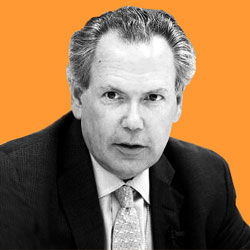
Kenneth E. Bentsen, Jr.
President and CEO of SIFMA
+

Kenneth E. Bentsen, Jr.
President and CEO of SIFMA
The most influential financial industry trade group, SIFMA, has been at the forefront of the effort to kill the regulation. It has been equally adamant in pushing for the Securities and Exchange Commission to go first in proposing a fiduciary duty rule, and has worked hard to shape the SEC’s version. SEC Chairwoman Mary Jo White announced her support for a fiduciary rule at a SIFMA event in 2015.
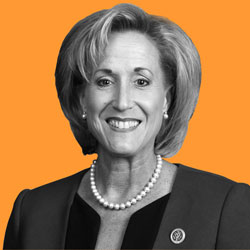
Rep. Ann Wagner
R-Mo.
Ms. Wagner has been the most vociferous opponent of the DOL rule on Capitol Hill for years. She has prepared her cohorts for a bloody battle, touting her own bill that would halt the rule and saying if it didn’t pass the Senate, the next option would be to “defund” the regulation.
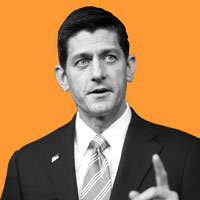
Rep. Paul D. Ryan
House Speaker, R-Wisc.
+

Rep. Paul D. Ryan
House Speaker, R-Wisc.
Since the end of February, Mr. Ryan has moved the DOL fiduciary rule to the top of his hit list. In staff blog posts and public statements, he has portrayed the measure as a symbol of the Obama administration’s regulatory overreach. He has vowed that the House will pass legislation to halt it.
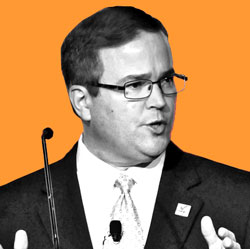
Dale Brown
President and CEO of FSI
+

Dale Brown
President and CEO of FSI
The trade association for independent broker-dealers and financial advisers has done as much as any group to make the label “unworkable” stick to the DOL fiduciary proposal. The group says its goal is “constructive engagement” with the Labor Department. But if the rule eventually stalls, FSI will have been a major contributor to obstructing it.
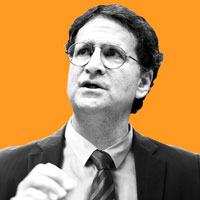
Kent Mason
Partner at Davis & Harman
+

Kent Mason
Partner at Davis & Harman
Many of the talking points used by opponents of the DOL fiduciary rule can be traced back to Mr. Mason, a partner at Davis & Harman LLP. He has been instrumental in formulating the industry response to the rule. He was the force behind a study that asserts that an investment-advice rule change in the United Kingdom led to brokers abandoning small accounts.
“Industry kept insisting there was no problem,” said Barbara Roper, director of investor protection at the Consumer Federation of America. “Their overstatement made [Secretary Perez] skeptical. They overplayed their hand with him.”
Between 2011, when the DOL rule was withdrawn, and 2015, when it was re-proposed, the industry missed a chance to offer alternative proposals, according to one financial services lobbyist.
“The industry did a happy dance over what it thought was the cadaver,” said the lobbyist, who asked not to be identified. “As an industry, we should have come forward with our own positive vision for legislation to help protect and preserve the best interests of clients in the retirement area.”
But another industry lobbyist called that analysis “20/20 hindsight,” and said stopping a determined DOL was always going to be difficult.
“I don’t know if we would say we missed an opportunity, knowing that the department was working on its re-proposal all along,” said Judi Carsrud, director of federal relations at the National Association of Insurance and Financial Advisors.
OBAMA
The
muscle

The DOL and its allies also were ramping up their advocacy game plan.
“We formed a more formal coalition at the beginning of 2015,” said David Certner, director of legislative policy at AARP. “We did a better job of communicating than we did in 2010. We did a better job of responding to the criticism.”
In fact, Mr. Obama made his presence felt at a February 2015 event at AARP, where he directed the DOL to re-propose the fiduciary rule. It was a major turning point because Mr. Obama’s unequivocal support helped keep wavering Democrats on board.
“It sent a powerful message of who you’re messing with if you are against the rule.
–Damon Silvers, policy director and special counsel at the AFL-CIO
“The message at some point shifted from ‘That’s the DOL’s rule’ to ‘That’s the president’s rule,’” said Damon Silvers, policy director and special counsel at the AFL-CIO. “It sent a powerful message of who you’re messing with if you are against the rule.”
Ms. Borzi described the moment of Mr. Obama’s speech as “surreal.”
“To have the president tell you to do something that you’ve been trying to do, that’s as good as it gets,” she said. “There was the president using the same words we had been using for years to describe the task at hand. It was inspirational. It was invigorating.”
But Mr. Obama’s appearance rankled the financial industry; it signaled that the fight against the rule would become much tougher.
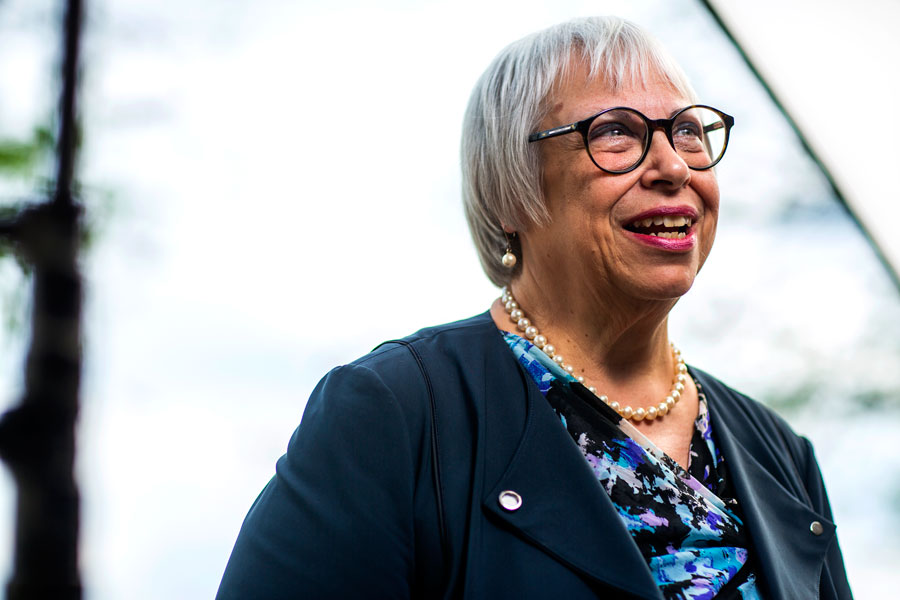 Phyllis Borzi during an interview in Washington on April 15.
Phyllis Borzi during an interview in Washington on April 15.
Despite the added White House muscle, it’s Ms. Borzi who gets most of the credit for standing firm among industry objections.
“They did not bargain on Phyllis Borzi’s spine of steel,” Ms. Roper said.
Or her hard shell, which protected each determined step along the rule’s considerable journey.
The tortoise has emerged not only as a regulator with an accomplishment that defines her career, but also as a more discerning recipient of investment advice.
In the middle of April, Ms. Borzi said she was about to fire her broker because he wouldn’t provide her with a breakdown of the fees she was being charged.
“I don’t think he’s giving me the best advice,” she said. “I’m going to get a fiduciary.”
Learn more about reprints and licensing for this article.





























